-
EXECUTIVE SUMMARY
-
Market Overview
-
Key Findings
-
Market Segmentation
-
Competitive Landscape
-
Challenges and Opportunities
-
Future Outlook
-
MARKET INTRODUCTION
-
Definition
-
Scope of the study
- Research Objective
- Assumption
- Limitations
-
RESEARCH METHODOLOGY
-
Overview
-
Data Mining
-
Secondary Research
-
Primary Research
- Primary Interviews and Information Gathering Process
- Breakdown of Primary Respondents
-
Forecasting Model
-
Market Size Estimation
- Bottom-Up Approach
- Top-Down Approach
-
Data Triangulation
-
Validation
-
MARKET DYNAMICS
-
Overview
-
Drivers
-
Restraints
-
Opportunities
-
MARKET FACTOR ANALYSIS
-
Value chain Analysis
-
Porter's Five Forces Analysis
- Bargaining Power of Suppliers
- Bargaining Power of Buyers
- Threat of New Entrants
- Threat of Substitutes
- Intensity of Rivalry
-
COVID-19 Impact Analysis
- Market Impact Analysis
- Regional Impact
- Opportunity and Threat Analysis
-
LITHIUM IRON PHOSPHATE BATTERIES MARKET, BY APPLICATION (USD BILLION)
-
Electric Vehicles
-
Energy Storage Systems
-
Consumer Electronics
-
Power Tools
-
Electric Bicycles
-
LITHIUM IRON PHOSPHATE BATTERIES MARKET, BY END USE (USD BILLION)
-
Automotive
-
Residential
-
Commercial
-
Industrial
-
LITHIUM IRON PHOSPHATE BATTERIES MARKET, BY BATTERY CAPACITY (USD BILLION)
-
Below 10 Ah
-
10 Ah to 50 Ah
-
51 Ah to 100 Ah
-
Above 100 Ah
-
LITHIUM IRON PHOSPHATE BATTERIES MARKET, BY DISTRIBUTION CHANNEL (USD BILLION)
-
Online Retail
-
Offline Retail
-
Direct Sales
-
LITHIUM IRON PHOSPHATE BATTERIES MARKET, BY REGIONAL (USD BILLION)
-
North America
- US
- Canada
-
Europe
- Germany
- UK
- France
- Russia
- Italy
- Spain
- Rest of Europe
-
APAC
- China
- India
- Japan
- South Korea
- Malaysia
- Thailand
- Indonesia
- Rest of APAC
-
South America
- Brazil
- Mexico
- Argentina
- Rest of South America
-
MEA
- GCC Countries
- South Africa
- Rest of MEA
-
COMPETITIVE LANDSCAPE
-
Overview
-
Competitive Analysis
-
Market share Analysis
-
Major Growth Strategy in the Lithium Iron Phosphate Batteries Market
-
Competitive Benchmarking
-
Leading Players in Terms of Number of Developments in the Lithium Iron Phosphate Batteries Market
-
Key developments and growth strategies
- New Product Launch/Service Deployment
- Merger & Acquisitions
- Joint Ventures
-
Major Players Financial Matrix
- Sales and Operating Income
- Major Players R&D Expenditure. 2023
-
COMPANY PROFILES
-
Kokam Co. Limited
- Financial Overview
- Products Offered
- Key Developments
- SWOT Analysis
- Key Strategies
-
Northvolt
- Financial Overview
- Products Offered
- Key Developments
- SWOT Analysis
- Key Strategies
-
Contemporary Amperex Technology Co. Limited
- Financial Overview
- Products Offered
- Key Developments
- SWOT Analysis
- Key Strategies
-
Guangzhou Great Power Energy and Technology Co. Limited
- Financial Overview
- Products Offered
- Key Developments
- SWOT Analysis
- Key Strategies
-
A123 Systems
- Financial Overview
- Products Offered
- Key Developments
- SWOT Analysis
- Key Strategies
-
Shenzhen BAK Battery Co. Limited
- Financial Overview
- Products Offered
- Key Developments
- SWOT Analysis
- Key Strategies
-
Tianjin Lishen Battery JointStock Co. Limited
- Financial Overview
- Products Offered
- Key Developments
- SWOT Analysis
- Key Strategies
-
CATL
- Financial Overview
- Products Offered
- Key Developments
- SWOT Analysis
- Key Strategies
-
LGChem
- Financial Overview
- Products Offered
- Key Developments
- SWOT Analysis
- Key Strategies
-
BYD Company Limited
- Financial Overview
- Products Offered
- Key Developments
- SWOT Analysis
- Key Strategies
-
Jiangsu Nanguang Battery
- Financial Overview
- Products Offered
- Key Developments
- SWOT Analysis
- Key Strategies
-
Farasis Energy
- Financial Overview
- Products Offered
- Key Developments
- SWOT Analysis
- Key Strategies
-
Lishen Battery
- Financial Overview
- Products Offered
- Key Developments
- SWOT Analysis
- Key Strategies
-
Rohm and Haas Company
- Financial Overview
- Products Offered
- Key Developments
- SWOT Analysis
- Key Strategies
-
Amperex Technology Limited
- Financial Overview
- Products Offered
- Key Developments
- SWOT Analysis
- Key Strategies
-
APPENDIX
-
References
-
Related Reports
-
LIST OF TABLES
-
LIST OF ASSUMPTIONS
-
NORTH AMERICA LITHIUM IRON PHOSPHATE BATTERIES MARKET SIZE ESTIMATES & FORECAST, BY APPLICATION, 2019-2035 (USD BILLIONS)
-
NORTH AMERICA LITHIUM IRON PHOSPHATE BATTERIES MARKET SIZE ESTIMATES & FORECAST, BY END USE, 2019-2035 (USD BILLIONS)
-
NORTH AMERICA LITHIUM IRON PHOSPHATE BATTERIES MARKET SIZE ESTIMATES & FORECAST, BY BATTERY CAPACITY, 2019-2035 (USD BILLIONS)
-
NORTH AMERICA LITHIUM IRON PHOSPHATE BATTERIES MARKET SIZE ESTIMATES & FORECAST, BY DISTRIBUTION CHANNEL, 2019-2035 (USD BILLIONS)
-
NORTH AMERICA LITHIUM IRON PHOSPHATE BATTERIES MARKET SIZE ESTIMATES & FORECAST, BY REGIONAL, 2019-2035 (USD BILLIONS)
-
US LITHIUM IRON PHOSPHATE BATTERIES MARKET SIZE ESTIMATES & FORECAST, BY APPLICATION, 2019-2035 (USD BILLIONS)
-
US LITHIUM IRON PHOSPHATE BATTERIES MARKET SIZE ESTIMATES & FORECAST, BY END USE, 2019-2035 (USD BILLIONS)
-
US LITHIUM IRON PHOSPHATE BATTERIES MARKET SIZE ESTIMATES & FORECAST, BY BATTERY CAPACITY, 2019-2035 (USD BILLIONS)
-
US LITHIUM IRON PHOSPHATE BATTERIES MARKET SIZE ESTIMATES & FORECAST, BY DISTRIBUTION CHANNEL, 2019-2035 (USD BILLIONS)
-
US LITHIUM IRON PHOSPHATE BATTERIES MARKET SIZE ESTIMATES & FORECAST, BY REGIONAL, 2019-2035 (USD BILLIONS)
-
CANADA LITHIUM IRON PHOSPHATE BATTERIES MARKET SIZE ESTIMATES & FORECAST, BY APPLICATION, 2019-2035 (USD BILLIONS)
-
CANADA LITHIUM IRON PHOSPHATE BATTERIES MARKET SIZE ESTIMATES & FORECAST, BY END USE, 2019-2035 (USD BILLIONS)
-
CANADA LITHIUM IRON PHOSPHATE BATTERIES MARKET SIZE ESTIMATES & FORECAST, BY BATTERY CAPACITY, 2019-2035 (USD BILLIONS)
-
CANADA LITHIUM IRON PHOSPHATE BATTERIES MARKET SIZE ESTIMATES & FORECAST, BY DISTRIBUTION CHANNEL, 2019-2035 (USD BILLIONS)
-
CANADA LITHIUM IRON PHOSPHATE BATTERIES MARKET SIZE ESTIMATES & FORECAST, BY REGIONAL, 2019-2035 (USD BILLIONS)
-
EUROPE LITHIUM IRON PHOSPHATE BATTERIES MARKET SIZE ESTIMATES & FORECAST, BY APPLICATION, 2019-2035 (USD BILLIONS)
-
EUROPE LITHIUM IRON PHOSPHATE BATTERIES MARKET SIZE ESTIMATES & FORECAST, BY END USE, 2019-2035 (USD BILLIONS)
-
EUROPE LITHIUM IRON PHOSPHATE BATTERIES MARKET SIZE ESTIMATES & FORECAST, BY BATTERY CAPACITY, 2019-2035 (USD BILLIONS)
-
EUROPE LITHIUM IRON PHOSPHATE BATTERIES MARKET SIZE ESTIMATES & FORECAST, BY DISTRIBUTION CHANNEL, 2019-2035 (USD BILLIONS)
-
EUROPE LITHIUM IRON PHOSPHATE BATTERIES MARKET SIZE ESTIMATES & FORECAST, BY REGIONAL, 2019-2035 (USD BILLIONS)
-
GERMANY LITHIUM IRON PHOSPHATE BATTERIES MARKET SIZE ESTIMATES & FORECAST, BY APPLICATION, 2019-2035 (USD BILLIONS)
-
GERMANY LITHIUM IRON PHOSPHATE BATTERIES MARKET SIZE ESTIMATES & FORECAST, BY END USE, 2019-2035 (USD BILLIONS)
-
GERMANY LITHIUM IRON PHOSPHATE BATTERIES MARKET SIZE ESTIMATES & FORECAST, BY BATTERY CAPACITY, 2019-2035 (USD BILLIONS)
-
GERMANY LITHIUM IRON PHOSPHATE BATTERIES MARKET SIZE ESTIMATES & FORECAST, BY DISTRIBUTION CHANNEL, 2019-2035 (USD BILLIONS)
-
GERMANY LITHIUM IRON PHOSPHATE BATTERIES MARKET SIZE ESTIMATES & FORECAST, BY REGIONAL, 2019-2035 (USD BILLIONS)
-
UK LITHIUM IRON PHOSPHATE BATTERIES MARKET SIZE ESTIMATES & FORECAST, BY APPLICATION, 2019-2035 (USD BILLIONS)
-
UK LITHIUM IRON PHOSPHATE BATTERIES MARKET SIZE ESTIMATES & FORECAST, BY END USE, 2019-2035 (USD BILLIONS)
-
UK LITHIUM IRON PHOSPHATE BATTERIES MARKET SIZE ESTIMATES & FORECAST, BY BATTERY CAPACITY, 2019-2035 (USD BILLIONS)
-
UK LITHIUM IRON PHOSPHATE BATTERIES MARKET SIZE ESTIMATES & FORECAST, BY DISTRIBUTION CHANNEL, 2019-2035 (USD BILLIONS)
-
UK LITHIUM IRON PHOSPHATE BATTERIES MARKET SIZE ESTIMATES & FORECAST, BY REGIONAL, 2019-2035 (USD BILLIONS)
-
FRANCE LITHIUM IRON PHOSPHATE BATTERIES MARKET SIZE ESTIMATES & FORECAST, BY APPLICATION, 2019-2035 (USD BILLIONS)
-
FRANCE LITHIUM IRON PHOSPHATE BATTERIES MARKET SIZE ESTIMATES & FORECAST, BY END USE, 2019-2035 (USD BILLIONS)
-
FRANCE LITHIUM IRON PHOSPHATE BATTERIES MARKET SIZE ESTIMATES & FORECAST, BY BATTERY CAPACITY, 2019-2035 (USD BILLIONS)
-
FRANCE LITHIUM IRON PHOSPHATE BATTERIES MARKET SIZE ESTIMATES & FORECAST, BY DISTRIBUTION CHANNEL, 2019-2035 (USD BILLIONS)
-
FRANCE LITHIUM IRON PHOSPHATE BATTERIES MARKET SIZE ESTIMATES & FORECAST, BY REGIONAL, 2019-2035 (USD BILLIONS)
-
RUSSIA LITHIUM IRON PHOSPHATE BATTERIES MARKET SIZE ESTIMATES & FORECAST, BY APPLICATION, 2019-2035 (USD BILLIONS)
-
RUSSIA LITHIUM IRON PHOSPHATE BATTERIES MARKET SIZE ESTIMATES & FORECAST, BY END USE, 2019-2035 (USD BILLIONS)
-
RUSSIA LITHIUM IRON PHOSPHATE BATTERIES MARKET SIZE ESTIMATES & FORECAST, BY BATTERY CAPACITY, 2019-2035 (USD BILLIONS)
-
RUSSIA LITHIUM IRON PHOSPHATE BATTERIES MARKET SIZE ESTIMATES & FORECAST, BY DISTRIBUTION CHANNEL, 2019-2035 (USD BILLIONS)
-
RUSSIA LITHIUM IRON PHOSPHATE BATTERIES MARKET SIZE ESTIMATES & FORECAST, BY REGIONAL, 2019-2035 (USD BILLIONS)
-
ITALY LITHIUM IRON PHOSPHATE BATTERIES MARKET SIZE ESTIMATES & FORECAST, BY APPLICATION, 2019-2035 (USD BILLIONS)
-
ITALY LITHIUM IRON PHOSPHATE BATTERIES MARKET SIZE ESTIMATES & FORECAST, BY END USE, 2019-2035 (USD BILLIONS)
-
ITALY LITHIUM IRON PHOSPHATE BATTERIES MARKET SIZE ESTIMATES & FORECAST, BY BATTERY CAPACITY, 2019-2035 (USD BILLIONS)
-
ITALY LITHIUM IRON PHOSPHATE BATTERIES MARKET SIZE ESTIMATES & FORECAST, BY DISTRIBUTION CHANNEL, 2019-2035 (USD BILLIONS)
-
ITALY LITHIUM IRON PHOSPHATE BATTERIES MARKET SIZE ESTIMATES & FORECAST, BY REGIONAL, 2019-2035 (USD BILLIONS)
-
SPAIN LITHIUM IRON PHOSPHATE BATTERIES MARKET SIZE ESTIMATES & FORECAST, BY APPLICATION, 2019-2035 (USD BILLIONS)
-
SPAIN LITHIUM IRON PHOSPHATE BATTERIES MARKET SIZE ESTIMATES & FORECAST, BY END USE, 2019-2035 (USD BILLIONS)
-
SPAIN LITHIUM IRON PHOSPHATE BATTERIES MARKET SIZE ESTIMATES & FORECAST, BY BATTERY CAPACITY, 2019-2035 (USD BILLIONS)
-
SPAIN LITHIUM IRON PHOSPHATE BATTERIES MARKET SIZE ESTIMATES & FORECAST, BY DISTRIBUTION CHANNEL, 2019-2035 (USD BILLIONS)
-
SPAIN LITHIUM IRON PHOSPHATE BATTERIES MARKET SIZE ESTIMATES & FORECAST, BY REGIONAL, 2019-2035 (USD BILLIONS)
-
REST OF EUROPE LITHIUM IRON PHOSPHATE BATTERIES MARKET SIZE ESTIMATES & FORECAST, BY APPLICATION, 2019-2035 (USD BILLIONS)
-
REST OF EUROPE LITHIUM IRON PHOSPHATE BATTERIES MARKET SIZE ESTIMATES & FORECAST, BY END USE, 2019-2035 (USD BILLIONS)
-
REST OF EUROPE LITHIUM IRON PHOSPHATE BATTERIES MARKET SIZE ESTIMATES & FORECAST, BY BATTERY CAPACITY, 2019-2035 (USD BILLIONS)
-
REST OF EUROPE LITHIUM IRON PHOSPHATE BATTERIES MARKET SIZE ESTIMATES & FORECAST, BY DISTRIBUTION CHANNEL, 2019-2035 (USD BILLIONS)
-
REST OF EUROPE LITHIUM IRON PHOSPHATE BATTERIES MARKET SIZE ESTIMATES & FORECAST, BY REGIONAL, 2019-2035 (USD BILLIONS)
-
APAC LITHIUM IRON PHOSPHATE BATTERIES MARKET SIZE ESTIMATES & FORECAST, BY APPLICATION, 2019-2035 (USD BILLIONS)
-
APAC LITHIUM IRON PHOSPHATE BATTERIES MARKET SIZE ESTIMATES & FORECAST, BY END USE, 2019-2035 (USD BILLIONS)
-
APAC LITHIUM IRON PHOSPHATE BATTERIES MARKET SIZE ESTIMATES & FORECAST, BY BATTERY CAPACITY, 2019-2035 (USD BILLIONS)
-
APAC LITHIUM IRON PHOSPHATE BATTERIES MARKET SIZE ESTIMATES & FORECAST, BY DISTRIBUTION CHANNEL, 2019-2035 (USD BILLIONS)
-
APAC LITHIUM IRON PHOSPHATE BATTERIES MARKET SIZE ESTIMATES & FORECAST, BY REGIONAL, 2019-2035 (USD BILLIONS)
-
CHINA LITHIUM IRON PHOSPHATE BATTERIES MARKET SIZE ESTIMATES & FORECAST, BY APPLICATION, 2019-2035 (USD BILLIONS)
-
CHINA LITHIUM IRON PHOSPHATE BATTERIES MARKET SIZE ESTIMATES & FORECAST, BY END USE, 2019-2035 (USD BILLIONS)
-
CHINA LITHIUM IRON PHOSPHATE BATTERIES MARKET SIZE ESTIMATES & FORECAST, BY BATTERY CAPACITY, 2019-2035 (USD BILLIONS)
-
CHINA LITHIUM IRON PHOSPHATE BATTERIES MARKET SIZE ESTIMATES & FORECAST, BY DISTRIBUTION CHANNEL, 2019-2035 (USD BILLIONS)
-
CHINA LITHIUM IRON PHOSPHATE BATTERIES MARKET SIZE ESTIMATES & FORECAST, BY REGIONAL, 2019-2035 (USD BILLIONS)
-
INDIA LITHIUM IRON PHOSPHATE BATTERIES MARKET SIZE ESTIMATES & FORECAST, BY APPLICATION, 2019-2035 (USD BILLIONS)
-
INDIA LITHIUM IRON PHOSPHATE BATTERIES MARKET SIZE ESTIMATES & FORECAST, BY END USE, 2019-2035 (USD BILLIONS)
-
INDIA LITHIUM IRON PHOSPHATE BATTERIES MARKET SIZE ESTIMATES & FORECAST, BY BATTERY CAPACITY, 2019-2035 (USD BILLIONS)
-
INDIA LITHIUM IRON PHOSPHATE BATTERIES MARKET SIZE ESTIMATES & FORECAST, BY DISTRIBUTION CHANNEL, 2019-2035 (USD BILLIONS)
-
INDIA LITHIUM IRON PHOSPHATE BATTERIES MARKET SIZE ESTIMATES & FORECAST, BY REGIONAL, 2019-2035 (USD BILLIONS)
-
JAPAN LITHIUM IRON PHOSPHATE BATTERIES MARKET SIZE ESTIMATES & FORECAST, BY APPLICATION, 2019-2035 (USD BILLIONS)
-
JAPAN LITHIUM IRON PHOSPHATE BATTERIES MARKET SIZE ESTIMATES & FORECAST, BY END USE, 2019-2035 (USD BILLIONS)
-
JAPAN LITHIUM IRON PHOSPHATE BATTERIES MARKET SIZE ESTIMATES & FORECAST, BY BATTERY CAPACITY, 2019-2035 (USD BILLIONS)
-
JAPAN LITHIUM IRON PHOSPHATE BATTERIES MARKET SIZE ESTIMATES & FORECAST, BY DISTRIBUTION CHANNEL, 2019-2035 (USD BILLIONS)
-
JAPAN LITHIUM IRON PHOSPHATE BATTERIES MARKET SIZE ESTIMATES & FORECAST, BY REGIONAL, 2019-2035 (USD BILLIONS)
-
SOUTH KOREA LITHIUM IRON PHOSPHATE BATTERIES MARKET SIZE ESTIMATES & FORECAST, BY APPLICATION, 2019-2035 (USD BILLIONS)
-
SOUTH KOREA LITHIUM IRON PHOSPHATE BATTERIES MARKET SIZE ESTIMATES & FORECAST, BY END USE, 2019-2035 (USD BILLIONS)
-
SOUTH KOREA LITHIUM IRON PHOSPHATE BATTERIES MARKET SIZE ESTIMATES & FORECAST, BY BATTERY CAPACITY, 2019-2035 (USD BILLIONS)
-
SOUTH KOREA LITHIUM IRON PHOSPHATE BATTERIES MARKET SIZE ESTIMATES & FORECAST, BY DISTRIBUTION CHANNEL, 2019-2035 (USD BILLIONS)
-
SOUTH KOREA LITHIUM IRON PHOSPHATE BATTERIES MARKET SIZE ESTIMATES & FORECAST, BY REGIONAL, 2019-2035 (USD BILLIONS)
-
MALAYSIA LITHIUM IRON PHOSPHATE BATTERIES MARKET SIZE ESTIMATES & FORECAST, BY APPLICATION, 2019-2035 (USD BILLIONS)
-
MALAYSIA LITHIUM IRON PHOSPHATE BATTERIES MARKET SIZE ESTIMATES & FORECAST, BY END USE, 2019-2035 (USD BILLIONS)
-
MALAYSIA LITHIUM IRON PHOSPHATE BATTERIES MARKET SIZE ESTIMATES & FORECAST, BY BATTERY CAPACITY, 2019-2035 (USD BILLIONS)
-
MALAYSIA LITHIUM IRON PHOSPHATE BATTERIES MARKET SIZE ESTIMATES & FORECAST, BY DISTRIBUTION CHANNEL, 2019-2035 (USD BILLIONS)
-
MALAYSIA LITHIUM IRON PHOSPHATE BATTERIES MARKET SIZE ESTIMATES & FORECAST, BY REGIONAL, 2019-2035 (USD BILLIONS)
-
THAILAND LITHIUM IRON PHOSPHATE BATTERIES MARKET SIZE ESTIMATES & FORECAST, BY APPLICATION, 2019-2035 (USD BILLIONS)
-
THAILAND LITHIUM IRON PHOSPHATE BATTERIES MARKET SIZE ESTIMATES & FORECAST, BY END USE, 2019-2035 (USD BILLIONS)
-
THAILAND LITHIUM IRON PHOSPHATE BATTERIES MARKET SIZE ESTIMATES & FORECAST, BY BATTERY CAPACITY, 2019-2035 (USD BILLIONS)
-
THAILAND LITHIUM IRON PHOSPHATE BATTERIES MARKET SIZE ESTIMATES & FORECAST, BY DISTRIBUTION CHANNEL, 2019-2035 (USD BILLIONS)
-
THAILAND LITHIUM IRON PHOSPHATE BATTERIES MARKET SIZE ESTIMATES & FORECAST, BY REGIONAL, 2019-2035 (USD BILLIONS)
-
INDONESIA LITHIUM IRON PHOSPHATE BATTERIES MARKET SIZE ESTIMATES & FORECAST, BY APPLICATION, 2019-2035 (USD BILLIONS)
-
INDONESIA LITHIUM IRON PHOSPHATE BATTERIES MARKET SIZE ESTIMATES & FORECAST, BY END USE, 2019-2035 (USD BILLIONS)
-
INDONESIA LITHIUM IRON PHOSPHATE BATTERIES MARKET SIZE ESTIMATES & FORECAST, BY BATTERY CAPACITY, 2019-2035 (USD BILLIONS)
-
INDONESIA LITHIUM IRON PHOSPHATE BATTERIES MARKET SIZE ESTIMATES & FORECAST, BY DISTRIBUTION CHANNEL, 2019-2035 (USD BILLIONS)
-
INDONESIA LITHIUM IRON PHOSPHATE BATTERIES MARKET SIZE ESTIMATES & FORECAST, BY REGIONAL, 2019-2035 (USD BILLIONS)
-
REST OF APAC LITHIUM IRON PHOSPHATE BATTERIES MARKET SIZE ESTIMATES & FORECAST, BY APPLICATION, 2019-2035 (USD BILLIONS)
-
REST OF APAC LITHIUM IRON PHOSPHATE BATTERIES MARKET SIZE ESTIMATES & FORECAST, BY END USE, 2019-2035 (USD BILLIONS)
-
REST OF APAC LITHIUM IRON PHOSPHATE BATTERIES MARKET SIZE ESTIMATES & FORECAST, BY BATTERY CAPACITY, 2019-2035 (USD BILLIONS)
-
REST OF APAC LITHIUM IRON PHOSPHATE BATTERIES MARKET SIZE ESTIMATES & FORECAST, BY DISTRIBUTION CHANNEL, 2019-2035 (USD BILLIONS)
-
REST OF APAC LITHIUM IRON PHOSPHATE BATTERIES MARKET SIZE ESTIMATES & FORECAST, BY REGIONAL, 2019-2035 (USD BILLIONS)
-
SOUTH AMERICA LITHIUM IRON PHOSPHATE BATTERIES MARKET SIZE ESTIMATES & FORECAST, BY APPLICATION, 2019-2035 (USD BILLIONS)
-
SOUTH AMERICA LITHIUM IRON PHOSPHATE BATTERIES MARKET SIZE ESTIMATES & FORECAST, BY END USE, 2019-2035 (USD BILLIONS)
-
SOUTH AMERICA LITHIUM IRON PHOSPHATE BATTERIES MARKET SIZE ESTIMATES & FORECAST, BY BATTERY CAPACITY, 2019-2035 (USD BILLIONS)
-
SOUTH AMERICA LITHIUM IRON PHOSPHATE BATTERIES MARKET SIZE ESTIMATES & FORECAST, BY DISTRIBUTION CHANNEL, 2019-2035 (USD BILLIONS)
-
SOUTH AMERICA LITHIUM IRON PHOSPHATE BATTERIES MARKET SIZE ESTIMATES & FORECAST, BY REGIONAL, 2019-2035 (USD BILLIONS)
-
BRAZIL LITHIUM IRON PHOSPHATE BATTERIES MARKET SIZE ESTIMATES & FORECAST, BY APPLICATION, 2019-2035 (USD BILLIONS)
-
BRAZIL LITHIUM IRON PHOSPHATE BATTERIES MARKET SIZE ESTIMATES & FORECAST, BY END USE, 2019-2035 (USD BILLIONS)
-
BRAZIL LITHIUM IRON PHOSPHATE BATTERIES MARKET SIZE ESTIMATES & FORECAST, BY BATTERY CAPACITY, 2019-2035 (USD BILLIONS)
-
BRAZIL LITHIUM IRON PHOSPHATE BATTERIES MARKET SIZE ESTIMATES & FORECAST, BY DISTRIBUTION CHANNEL, 2019-2035 (USD BILLIONS)
-
BRAZIL LITHIUM IRON PHOSPHATE BATTERIES MARKET SIZE ESTIMATES & FORECAST, BY REGIONAL, 2019-2035 (USD BILLIONS)
-
MEXICO LITHIUM IRON PHOSPHATE BATTERIES MARKET SIZE ESTIMATES & FORECAST, BY APPLICATION, 2019-2035 (USD BILLIONS)
-
MEXICO LITHIUM IRON PHOSPHATE BATTERIES MARKET SIZE ESTIMATES & FORECAST, BY END USE, 2019-2035 (USD BILLIONS)
-
MEXICO LITHIUM IRON PHOSPHATE BATTERIES MARKET SIZE ESTIMATES & FORECAST, BY BATTERY CAPACITY, 2019-2035 (USD BILLIONS)
-
MEXICO LITHIUM IRON PHOSPHATE BATTERIES MARKET SIZE ESTIMATES & FORECAST, BY DISTRIBUTION CHANNEL, 2019-2035 (USD BILLIONS)
-
MEXICO LITHIUM IRON PHOSPHATE BATTERIES MARKET SIZE ESTIMATES & FORECAST, BY REGIONAL, 2019-2035 (USD BILLIONS)
-
ARGENTINA LITHIUM IRON PHOSPHATE BATTERIES MARKET SIZE ESTIMATES & FORECAST, BY APPLICATION, 2019-2035 (USD BILLIONS)
-
ARGENTINA LITHIUM IRON PHOSPHATE BATTERIES MARKET SIZE ESTIMATES & FORECAST, BY END USE, 2019-2035 (USD BILLIONS)
-
ARGENTINA LITHIUM IRON PHOSPHATE BATTERIES MARKET SIZE ESTIMATES & FORECAST, BY BATTERY CAPACITY, 2019-2035 (USD BILLIONS)
-
ARGENTINA LITHIUM IRON PHOSPHATE BATTERIES MARKET SIZE ESTIMATES & FORECAST, BY DISTRIBUTION CHANNEL, 2019-2035 (USD BILLIONS)
-
ARGENTINA LITHIUM IRON PHOSPHATE BATTERIES MARKET SIZE ESTIMATES & FORECAST, BY REGIONAL, 2019-2035 (USD BILLIONS)
-
REST OF SOUTH AMERICA LITHIUM IRON PHOSPHATE BATTERIES MARKET SIZE ESTIMATES & FORECAST, BY APPLICATION, 2019-2035 (USD BILLIONS)
-
REST OF SOUTH AMERICA LITHIUM IRON PHOSPHATE BATTERIES MARKET SIZE ESTIMATES & FORECAST, BY END USE, 2019-2035 (USD BILLIONS)
-
REST OF SOUTH AMERICA LITHIUM IRON PHOSPHATE BATTERIES MARKET SIZE ESTIMATES & FORECAST, BY BATTERY CAPACITY, 2019-2035 (USD BILLIONS)
-
REST OF SOUTH AMERICA LITHIUM IRON PHOSPHATE BATTERIES MARKET SIZE ESTIMATES & FORECAST, BY DISTRIBUTION CHANNEL, 2019-2035 (USD BILLIONS)
-
REST OF SOUTH AMERICA LITHIUM IRON PHOSPHATE BATTERIES MARKET SIZE ESTIMATES & FORECAST, BY REGIONAL, 2019-2035 (USD BILLIONS)
-
MEA LITHIUM IRON PHOSPHATE BATTERIES MARKET SIZE ESTIMATES & FORECAST, BY APPLICATION, 2019-2035 (USD BILLIONS)
-
MEA LITHIUM IRON PHOSPHATE BATTERIES MARKET SIZE ESTIMATES & FORECAST, BY END USE, 2019-2035 (USD BILLIONS)
-
MEA LITHIUM IRON PHOSPHATE BATTERIES MARKET SIZE ESTIMATES & FORECAST, BY BATTERY CAPACITY, 2019-2035 (USD BILLIONS)
-
MEA LITHIUM IRON PHOSPHATE BATTERIES MARKET SIZE ESTIMATES & FORECAST, BY DISTRIBUTION CHANNEL, 2019-2035 (USD BILLIONS)
-
MEA LITHIUM IRON PHOSPHATE BATTERIES MARKET SIZE ESTIMATES & FORECAST, BY REGIONAL, 2019-2035 (USD BILLIONS)
-
GCC COUNTRIES LITHIUM IRON PHOSPHATE BATTERIES MARKET SIZE ESTIMATES & FORECAST, BY APPLICATION, 2019-2035 (USD BILLIONS)
-
GCC COUNTRIES LITHIUM IRON PHOSPHATE BATTERIES MARKET SIZE ESTIMATES & FORECAST, BY END USE, 2019-2035 (USD BILLIONS)
-
GCC COUNTRIES LITHIUM IRON PHOSPHATE BATTERIES MARKET SIZE ESTIMATES & FORECAST, BY BATTERY CAPACITY, 2019-2035 (USD BILLIONS)
-
GCC COUNTRIES LITHIUM IRON PHOSPHATE BATTERIES MARKET SIZE ESTIMATES & FORECAST, BY DISTRIBUTION CHANNEL, 2019-2035 (USD BILLIONS)
-
GCC COUNTRIES LITHIUM IRON PHOSPHATE BATTERIES MARKET SIZE ESTIMATES & FORECAST, BY REGIONAL, 2019-2035 (USD BILLIONS)
-
SOUTH AFRICA LITHIUM IRON PHOSPHATE BATTERIES MARKET SIZE ESTIMATES & FORECAST, BY APPLICATION, 2019-2035 (USD BILLIONS)
-
SOUTH AFRICA LITHIUM IRON PHOSPHATE BATTERIES MARKET SIZE ESTIMATES & FORECAST, BY END USE, 2019-2035 (USD BILLIONS)
-
SOUTH AFRICA LITHIUM IRON PHOSPHATE BATTERIES MARKET SIZE ESTIMATES & FORECAST, BY BATTERY CAPACITY, 2019-2035 (USD BILLIONS)
-
SOUTH AFRICA LITHIUM IRON PHOSPHATE BATTERIES MARKET SIZE ESTIMATES & FORECAST, BY DISTRIBUTION CHANNEL, 2019-2035 (USD BILLIONS)
-
SOUTH AFRICA LITHIUM IRON PHOSPHATE BATTERIES MARKET SIZE ESTIMATES & FORECAST, BY REGIONAL, 2019-2035 (USD BILLIONS)
-
REST OF MEA LITHIUM IRON PHOSPHATE BATTERIES MARKET SIZE ESTIMATES & FORECAST, BY APPLICATION, 2019-2035 (USD BILLIONS)
-
REST OF MEA LITHIUM IRON PHOSPHATE BATTERIES MARKET SIZE ESTIMATES & FORECAST, BY END USE, 2019-2035 (USD BILLIONS)
-
REST OF MEA LITHIUM IRON PHOSPHATE BATTERIES MARKET SIZE ESTIMATES & FORECAST, BY BATTERY CAPACITY, 2019-2035 (USD BILLIONS)
-
REST OF MEA LITHIUM IRON PHOSPHATE BATTERIES MARKET SIZE ESTIMATES & FORECAST, BY DISTRIBUTION CHANNEL, 2019-2035 (USD BILLIONS)
-
REST OF MEA LITHIUM IRON PHOSPHATE BATTERIES MARKET SIZE ESTIMATES & FORECAST, BY REGIONAL, 2019-2035 (USD BILLIONS)
-
PRODUCT LAUNCH/PRODUCT DEVELOPMENT/APPROVAL
-
ACQUISITION/PARTNERSHIP
-
LIST OF FIGURES
-
MARKET SYNOPSIS
-
NORTH AMERICA LITHIUM IRON PHOSPHATE BATTERIES MARKET ANALYSIS
-
US LITHIUM IRON PHOSPHATE BATTERIES MARKET ANALYSIS BY APPLICATION
-
US LITHIUM IRON PHOSPHATE BATTERIES MARKET ANALYSIS BY END USE
-
US LITHIUM IRON PHOSPHATE BATTERIES MARKET ANALYSIS BY BATTERY CAPACITY
-
US LITHIUM IRON PHOSPHATE BATTERIES MARKET ANALYSIS BY DISTRIBUTION CHANNEL
-
US LITHIUM IRON PHOSPHATE BATTERIES MARKET ANALYSIS BY REGIONAL
-
CANADA LITHIUM IRON PHOSPHATE BATTERIES MARKET ANALYSIS BY APPLICATION
-
CANADA LITHIUM IRON PHOSPHATE BATTERIES MARKET ANALYSIS BY END USE
-
CANADA LITHIUM IRON PHOSPHATE BATTERIES MARKET ANALYSIS BY BATTERY CAPACITY
-
CANADA LITHIUM IRON PHOSPHATE BATTERIES MARKET ANALYSIS BY DISTRIBUTION CHANNEL
-
CANADA LITHIUM IRON PHOSPHATE BATTERIES MARKET ANALYSIS BY REGIONAL
-
EUROPE LITHIUM IRON PHOSPHATE BATTERIES MARKET ANALYSIS
-
GERMANY LITHIUM IRON PHOSPHATE BATTERIES MARKET ANALYSIS BY APPLICATION
-
GERMANY LITHIUM IRON PHOSPHATE BATTERIES MARKET ANALYSIS BY END USE
-
GERMANY LITHIUM IRON PHOSPHATE BATTERIES MARKET ANALYSIS BY BATTERY CAPACITY
-
GERMANY LITHIUM IRON PHOSPHATE BATTERIES MARKET ANALYSIS BY DISTRIBUTION CHANNEL
-
GERMANY LITHIUM IRON PHOSPHATE BATTERIES MARKET ANALYSIS BY REGIONAL
-
UK LITHIUM IRON PHOSPHATE BATTERIES MARKET ANALYSIS BY APPLICATION
-
UK LITHIUM IRON PHOSPHATE BATTERIES MARKET ANALYSIS BY END USE
-
UK LITHIUM IRON PHOSPHATE BATTERIES MARKET ANALYSIS BY BATTERY CAPACITY
-
UK LITHIUM IRON PHOSPHATE BATTERIES MARKET ANALYSIS BY DISTRIBUTION CHANNEL
-
UK LITHIUM IRON PHOSPHATE BATTERIES MARKET ANALYSIS BY REGIONAL
-
FRANCE LITHIUM IRON PHOSPHATE BATTERIES MARKET ANALYSIS BY APPLICATION
-
FRANCE LITHIUM IRON PHOSPHATE BATTERIES MARKET ANALYSIS BY END USE
-
FRANCE LITHIUM IRON PHOSPHATE BATTERIES MARKET ANALYSIS BY BATTERY CAPACITY
-
FRANCE LITHIUM IRON PHOSPHATE BATTERIES MARKET ANALYSIS BY DISTRIBUTION CHANNEL
-
FRANCE LITHIUM IRON PHOSPHATE BATTERIES MARKET ANALYSIS BY REGIONAL
-
RUSSIA LITHIUM IRON PHOSPHATE BATTERIES MARKET ANALYSIS BY APPLICATION
-
RUSSIA LITHIUM IRON PHOSPHATE BATTERIES MARKET ANALYSIS BY END USE
-
RUSSIA LITHIUM IRON PHOSPHATE BATTERIES MARKET ANALYSIS BY BATTERY CAPACITY
-
RUSSIA LITHIUM IRON PHOSPHATE BATTERIES MARKET ANALYSIS BY DISTRIBUTION CHANNEL
-
RUSSIA LITHIUM IRON PHOSPHATE BATTERIES MARKET ANALYSIS BY REGIONAL
-
ITALY LITHIUM IRON PHOSPHATE BATTERIES MARKET ANALYSIS BY APPLICATION
-
ITALY LITHIUM IRON PHOSPHATE BATTERIES MARKET ANALYSIS BY END USE
-
ITALY LITHIUM IRON PHOSPHATE BATTERIES MARKET ANALYSIS BY BATTERY CAPACITY
-
ITALY LITHIUM IRON PHOSPHATE BATTERIES MARKET ANALYSIS BY DISTRIBUTION CHANNEL
-
ITALY LITHIUM IRON PHOSPHATE BATTERIES MARKET ANALYSIS BY REGIONAL
-
SPAIN LITHIUM IRON PHOSPHATE BATTERIES MARKET ANALYSIS BY APPLICATION
-
SPAIN LITHIUM IRON PHOSPHATE BATTERIES MARKET ANALYSIS BY END USE
-
SPAIN LITHIUM IRON PHOSPHATE BATTERIES MARKET ANALYSIS BY BATTERY CAPACITY
-
SPAIN LITHIUM IRON PHOSPHATE BATTERIES MARKET ANALYSIS BY DISTRIBUTION CHANNEL
-
SPAIN LITHIUM IRON PHOSPHATE BATTERIES MARKET ANALYSIS BY REGIONAL
-
REST OF EUROPE LITHIUM IRON PHOSPHATE BATTERIES MARKET ANALYSIS BY APPLICATION
-
REST OF EUROPE LITHIUM IRON PHOSPHATE BATTERIES MARKET ANALYSIS BY END USE
-
REST OF EUROPE LITHIUM IRON PHOSPHATE BATTERIES MARKET ANALYSIS BY BATTERY CAPACITY
-
REST OF EUROPE LITHIUM IRON PHOSPHATE BATTERIES MARKET ANALYSIS BY DISTRIBUTION CHANNEL
-
REST OF EUROPE LITHIUM IRON PHOSPHATE BATTERIES MARKET ANALYSIS BY REGIONAL
-
APAC LITHIUM IRON PHOSPHATE BATTERIES MARKET ANALYSIS
-
CHINA LITHIUM IRON PHOSPHATE BATTERIES MARKET ANALYSIS BY APPLICATION
-
CHINA LITHIUM IRON PHOSPHATE BATTERIES MARKET ANALYSIS BY END USE
-
CHINA LITHIUM IRON PHOSPHATE BATTERIES MARKET ANALYSIS BY BATTERY CAPACITY
-
CHINA LITHIUM IRON PHOSPHATE BATTERIES MARKET ANALYSIS BY DISTRIBUTION CHANNEL
-
CHINA LITHIUM IRON PHOSPHATE BATTERIES MARKET ANALYSIS BY REGIONAL
-
INDIA LITHIUM IRON PHOSPHATE BATTERIES MARKET ANALYSIS BY APPLICATION
-
INDIA LITHIUM IRON PHOSPHATE BATTERIES MARKET ANALYSIS BY END USE
-
INDIA LITHIUM IRON PHOSPHATE BATTERIES MARKET ANALYSIS BY BATTERY CAPACITY
-
INDIA LITHIUM IRON PHOSPHATE BATTERIES MARKET ANALYSIS BY DISTRIBUTION CHANNEL
-
INDIA LITHIUM IRON PHOSPHATE BATTERIES MARKET ANALYSIS BY REGIONAL
-
JAPAN LITHIUM IRON PHOSPHATE BATTERIES MARKET ANALYSIS BY APPLICATION
-
JAPAN LITHIUM IRON PHOSPHATE BATTERIES MARKET ANALYSIS BY END USE
-
JAPAN LITHIUM IRON PHOSPHATE BATTERIES MARKET ANALYSIS BY BATTERY CAPACITY
-
JAPAN LITHIUM IRON PHOSPHATE BATTERIES MARKET ANALYSIS BY DISTRIBUTION CHANNEL
-
JAPAN LITHIUM IRON PHOSPHATE BATTERIES MARKET ANALYSIS BY REGIONAL
-
SOUTH KOREA LITHIUM IRON PHOSPHATE BATTERIES MARKET ANALYSIS BY APPLICATION
-
SOUTH KOREA LITHIUM IRON PHOSPHATE BATTERIES MARKET ANALYSIS BY END USE
-
SOUTH KOREA LITHIUM IRON PHOSPHATE BATTERIES MARKET ANALYSIS BY BATTERY CAPACITY
-
SOUTH KOREA LITHIUM IRON PHOSPHATE BATTERIES MARKET ANALYSIS BY DISTRIBUTION CHANNEL
-
SOUTH KOREA LITHIUM IRON PHOSPHATE BATTERIES MARKET ANALYSIS BY REGIONAL
-
MALAYSIA LITHIUM IRON PHOSPHATE BATTERIES MARKET ANALYSIS BY APPLICATION
-
MALAYSIA LITHIUM IRON PHOSPHATE BATTERIES MARKET ANALYSIS BY END USE
-
MALAYSIA LITHIUM IRON PHOSPHATE BATTERIES MARKET ANALYSIS BY BATTERY CAPACITY
-
MALAYSIA LITHIUM IRON PHOSPHATE BATTERIES MARKET ANALYSIS BY DISTRIBUTION CHANNEL
-
MALAYSIA LITHIUM IRON PHOSPHATE BATTERIES MARKET ANALYSIS BY REGIONAL
-
THAILAND LITHIUM IRON PHOSPHATE BATTERIES MARKET ANALYSIS BY APPLICATION
-
THAILAND LITHIUM IRON PHOSPHATE BATTERIES MARKET ANALYSIS BY END USE
-
THAILAND LITHIUM IRON PHOSPHATE BATTERIES MARKET ANALYSIS BY BATTERY CAPACITY
-
THAILAND LITHIUM IRON PHOSPHATE BATTERIES MARKET ANALYSIS BY DISTRIBUTION CHANNEL
-
THAILAND LITHIUM IRON PHOSPHATE BATTERIES MARKET ANALYSIS BY REGIONAL
-
INDONESIA LITHIUM IRON PHOSPHATE BATTERIES MARKET ANALYSIS BY APPLICATION
-
INDONESIA LITHIUM IRON PHOSPHATE BATTERIES MARKET ANALYSIS BY END USE
-
INDONESIA LITHIUM IRON PHOSPHATE BATTERIES MARKET ANALYSIS BY BATTERY CAPACITY
-
INDONESIA LITHIUM IRON PHOSPHATE BATTERIES MARKET ANALYSIS BY DISTRIBUTION CHANNEL
-
INDONESIA LITHIUM IRON PHOSPHATE BATTERIES MARKET ANALYSIS BY REGIONAL
-
REST OF APAC LITHIUM IRON PHOSPHATE BATTERIES MARKET ANALYSIS BY APPLICATION
-
REST OF APAC LITHIUM IRON PHOSPHATE BATTERIES MARKET ANALYSIS BY END USE
-
REST OF APAC LITHIUM IRON PHOSPHATE BATTERIES MARKET ANALYSIS BY BATTERY CAPACITY
-
REST OF APAC LITHIUM IRON PHOSPHATE BATTERIES MARKET ANALYSIS BY DISTRIBUTION CHANNEL
-
REST OF APAC LITHIUM IRON PHOSPHATE BATTERIES MARKET ANALYSIS BY REGIONAL
-
SOUTH AMERICA LITHIUM IRON PHOSPHATE BATTERIES MARKET ANALYSIS
-
BRAZIL LITHIUM IRON PHOSPHATE BATTERIES MARKET ANALYSIS BY APPLICATION
-
BRAZIL LITHIUM IRON PHOSPHATE BATTERIES MARKET ANALYSIS BY END USE
-
BRAZIL LITHIUM IRON PHOSPHATE BATTERIES MARKET ANALYSIS BY BATTERY CAPACITY
-
BRAZIL LITHIUM IRON PHOSPHATE BATTERIES MARKET ANALYSIS BY DISTRIBUTION CHANNEL
-
BRAZIL LITHIUM IRON PHOSPHATE BATTERIES MARKET ANALYSIS BY REGIONAL
-
MEXICO LITHIUM IRON PHOSPHATE BATTERIES MARKET ANALYSIS BY APPLICATION
-
MEXICO LITHIUM IRON PHOSPHATE BATTERIES MARKET ANALYSIS BY END USE
-
MEXICO LITHIUM IRON PHOSPHATE BATTERIES MARKET ANALYSIS BY BATTERY CAPACITY
-
MEXICO LITHIUM IRON PHOSPHATE BATTERIES MARKET ANALYSIS BY DISTRIBUTION CHANNEL
-
MEXICO LITHIUM IRON PHOSPHATE BATTERIES MARKET ANALYSIS BY REGIONAL
-
ARGENTINA LITHIUM IRON PHOSPHATE BATTERIES MARKET ANALYSIS BY APPLICATION
-
ARGENTINA LITHIUM IRON PHOSPHATE BATTERIES MARKET ANALYSIS BY END USE
-
ARGENTINA LITHIUM IRON PHOSPHATE BATTERIES MARKET ANALYSIS BY BATTERY CAPACITY
-
ARGENTINA LITHIUM IRON PHOSPHATE BATTERIES MARKET ANALYSIS BY DISTRIBUTION CHANNEL
-
ARGENTINA LITHIUM IRON PHOSPHATE BATTERIES MARKET ANALYSIS BY REGIONAL
-
REST OF SOUTH AMERICA LITHIUM IRON PHOSPHATE BATTERIES MARKET ANALYSIS BY APPLICATION
-
REST OF SOUTH AMERICA LITHIUM IRON PHOSPHATE BATTERIES MARKET ANALYSIS BY END USE
-
REST OF SOUTH AMERICA LITHIUM IRON PHOSPHATE BATTERIES MARKET ANALYSIS BY BATTERY CAPACITY
-
REST OF SOUTH AMERICA LITHIUM IRON PHOSPHATE BATTERIES MARKET ANALYSIS BY DISTRIBUTION CHANNEL
-
REST OF SOUTH AMERICA LITHIUM IRON PHOSPHATE BATTERIES MARKET ANALYSIS BY REGIONAL
-
MEA LITHIUM IRON PHOSPHATE BATTERIES MARKET ANALYSIS
-
GCC COUNTRIES LITHIUM IRON PHOSPHATE BATTERIES MARKET ANALYSIS BY APPLICATION
-
GCC COUNTRIES LITHIUM IRON PHOSPHATE BATTERIES MARKET ANALYSIS BY END USE
-
GCC COUNTRIES LITHIUM IRON PHOSPHATE BATTERIES MARKET ANALYSIS BY BATTERY CAPACITY
-
GCC COUNTRIES LITHIUM IRON PHOSPHATE BATTERIES MARKET ANALYSIS BY DISTRIBUTION CHANNEL
-
GCC COUNTRIES LITHIUM IRON PHOSPHATE BATTERIES MARKET ANALYSIS BY REGIONAL
-
SOUTH AFRICA LITHIUM IRON PHOSPHATE BATTERIES MARKET ANALYSIS BY APPLICATION
-
SOUTH AFRICA LITHIUM IRON PHOSPHATE BATTERIES MARKET ANALYSIS BY END USE
-
SOUTH AFRICA LITHIUM IRON PHOSPHATE BATTERIES MARKET ANALYSIS BY BATTERY CAPACITY
-
SOUTH AFRICA LITHIUM IRON PHOSPHATE BATTERIES MARKET ANALYSIS BY DISTRIBUTION CHANNEL
-
SOUTH AFRICA LITHIUM IRON PHOSPHATE BATTERIES MARKET ANALYSIS BY REGIONAL
-
REST OF MEA LITHIUM IRON PHOSPHATE BATTERIES MARKET ANALYSIS BY APPLICATION
-
REST OF MEA LITHIUM IRON PHOSPHATE BATTERIES MARKET ANALYSIS BY END USE
-
REST OF MEA LITHIUM IRON PHOSPHATE BATTERIES MARKET ANALYSIS BY BATTERY CAPACITY
-
REST OF MEA LITHIUM IRON PHOSPHATE BATTERIES MARKET ANALYSIS BY DISTRIBUTION CHANNEL
-
REST OF MEA LITHIUM IRON PHOSPHATE BATTERIES MARKET ANALYSIS BY REGIONAL
-
KEY BUYING CRITERIA OF LITHIUM IRON PHOSPHATE BATTERIES MARKET
-
RESEARCH PROCESS OF MRFR
-
DRO ANALYSIS OF LITHIUM IRON PHOSPHATE BATTERIES MARKET
-
DRIVERS IMPACT ANALYSIS: LITHIUM IRON PHOSPHATE BATTERIES MARKET
-
RESTRAINTS IMPACT ANALYSIS: LITHIUM IRON PHOSPHATE BATTERIES MARKET
-
SUPPLY / VALUE CHAIN: LITHIUM IRON PHOSPHATE BATTERIES MARKET
-
LITHIUM IRON PHOSPHATE BATTERIES MARKET, BY APPLICATION, 2025 (% SHARE)
-
LITHIUM IRON PHOSPHATE BATTERIES MARKET, BY APPLICATION, 2019 TO 2035 (USD Billions)
-
LITHIUM IRON PHOSPHATE BATTERIES MARKET, BY END USE, 2025 (% SHARE)
-
LITHIUM IRON PHOSPHATE BATTERIES MARKET, BY END USE, 2019 TO 2035 (USD Billions)
-
LITHIUM IRON PHOSPHATE BATTERIES MARKET, BY BATTERY CAPACITY, 2025 (% SHARE)
-
LITHIUM IRON PHOSPHATE BATTERIES MARKET, BY BATTERY CAPACITY, 2019 TO 2035 (USD Billions)
-
LITHIUM IRON PHOSPHATE BATTERIES MARKET, BY DISTRIBUTION CHANNEL, 2025 (% SHARE)
-
LITHIUM IRON PHOSPHATE BATTERIES MARKET, BY DISTRIBUTION CHANNEL, 2019 TO 2035 (USD Billions)
-
LITHIUM IRON PHOSPHATE BATTERIES MARKET, BY REGIONAL, 2025 (% SHARE)
-
LITHIUM IRON PHOSPHATE BATTERIES MARKET, BY REGIONAL, 2019 TO 2035 (USD Billions)
-
BENCHMARKING OF MAJOR COMPETITORS
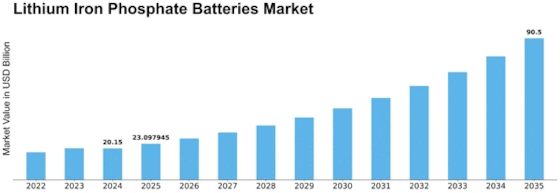

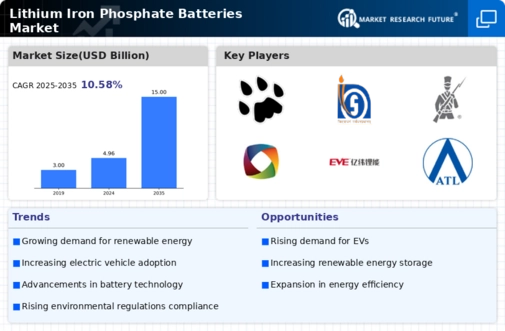
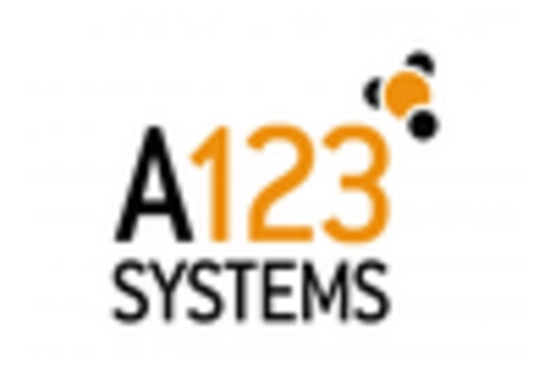
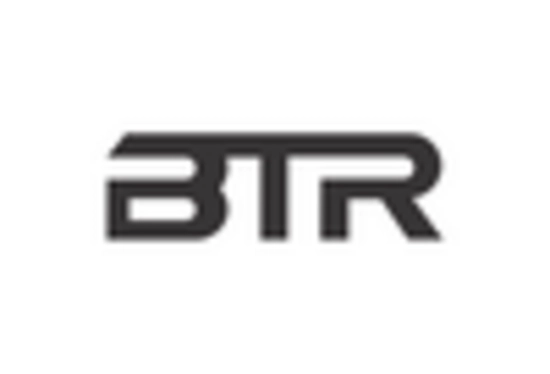
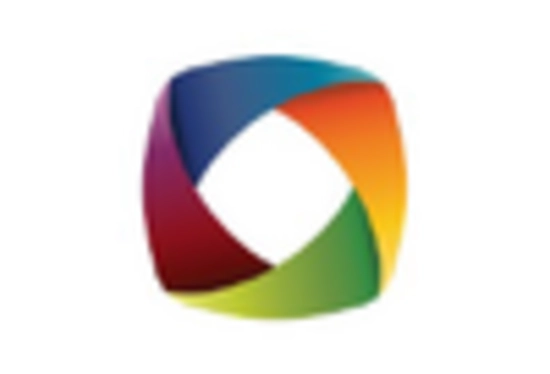
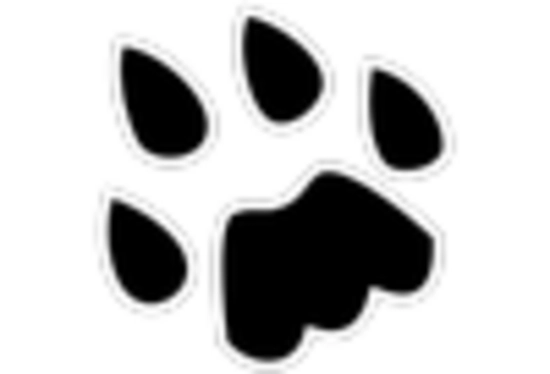
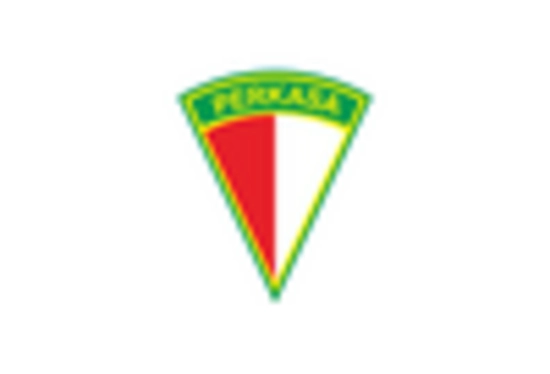
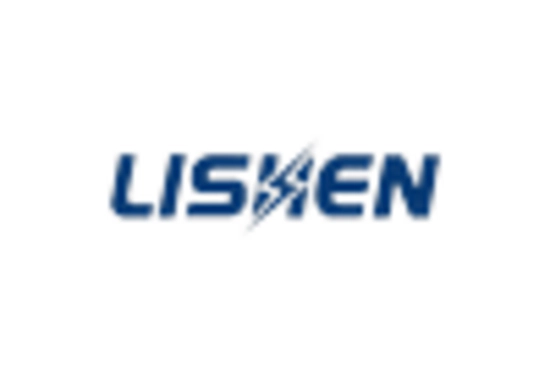

Leave a Comment